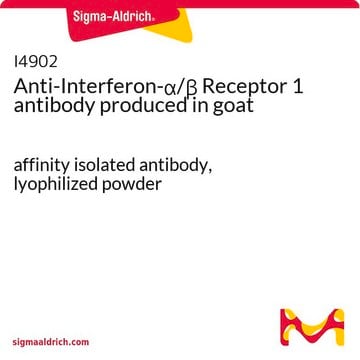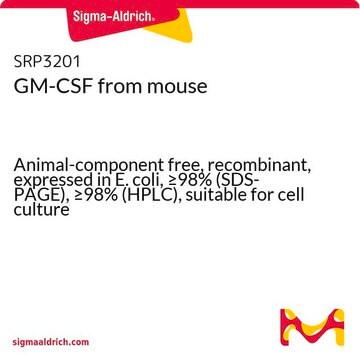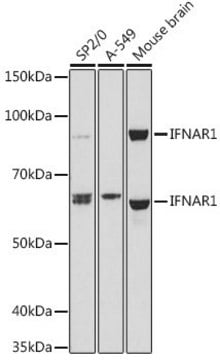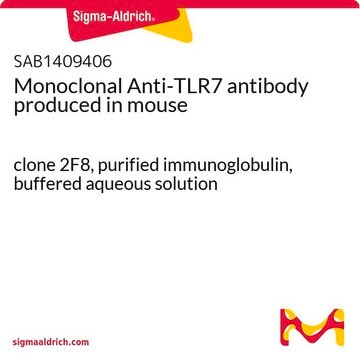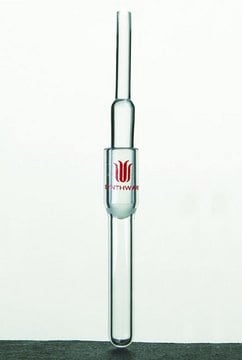04-151
Anti-IFNAR-1 Antibody, clone MARI-5A3
clone MARI-5A3, from mouse
Synonim(y):
interferon (alpha, beta and omega) receptor 1, beta-type antiviral protein, alpha-type antiviral protein, Type I interferon receptor 1, Cytokine receptor family 2 member 1, interferon-beta receptor 1, Cytokine receptor class-II member 1, IFN-alpha-REC, i
About This Item
Polecane produkty
pochodzenie biologiczne
mouse
Poziom jakości
forma przeciwciała
purified antibody
rodzaj przeciwciała
primary antibodies
klon
MARI-5A3, monoclonal
reaktywność gatunkowa
mouse
metody
flow cytometry: suitable
immunoprecipitation (IP): suitable
neutralization: suitable
western blot: suitable
izotyp
IgG1κ
numer dostępu NCBI
numer dostępu UniProt
Warunki transportu
wet ice
docelowa modyfikacja potranslacyjna
unmodified
informacje o genach
mouse ... Ifnar1(15975)
Opis ogólny
Specyficzność
Immunogen
Zastosowanie
Immunoprecipitation Analysis: A previous lot was used by an independent laboratory in IP. (Sheehan, K., et al. (2006). Journal of Interferon & Cytokine Research. 26:804-819.)
Flow Cytometry Analysis: A previous lot was used by an independent laboratory in FC. (Sheehan, K., et al. (2006). Journal of Interferon & Cytokine Research. 26:804-819.)
Neutralizing Assay: A previous lot was used by an independent laboratory in neutralization studies. (Sheehan, K., et al. (2006). Journal of Interferon & Cytokine Research. 26:804-819.)
Jakość
Flow Cytometry Analysis: 5 µg of this antibody detected IFNAR-1 in BALB/c splenocytes.
Opis wartości docelowych
Postać fizyczna
Inne uwagi
Not finding the right product?
Try our Narzędzie selektora produktów.
Kod klasy składowania
12 - Non Combustible Liquids
Klasa zagrożenia wodnego (WGK)
WGK 1
Temperatura zapłonu (°F)
Not applicable
Temperatura zapłonu (°C)
Not applicable
Certyfikaty analizy (CoA)
Poszukaj Certyfikaty analizy (CoA), wpisując numer partii/serii produktów. Numery serii i partii można znaleźć na etykiecie produktu po słowach „seria” lub „partia”.
Masz już ten produkt?
Dokumenty związane z niedawno zakupionymi produktami zostały zamieszczone w Bibliotece dokumentów.
Nasz zespół naukowców ma doświadczenie we wszystkich obszarach badań, w tym w naukach przyrodniczych, materiałoznawstwie, syntezie chemicznej, chromatografii, analityce i wielu innych dziedzinach.
Skontaktuj się z zespołem ds. pomocy technicznej
